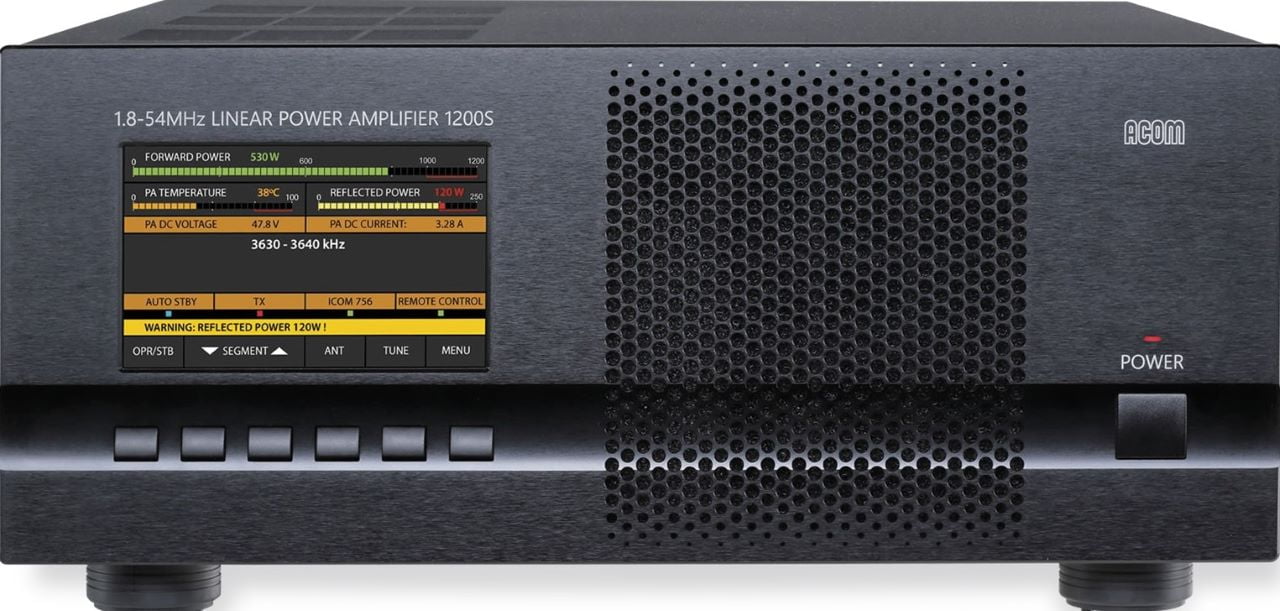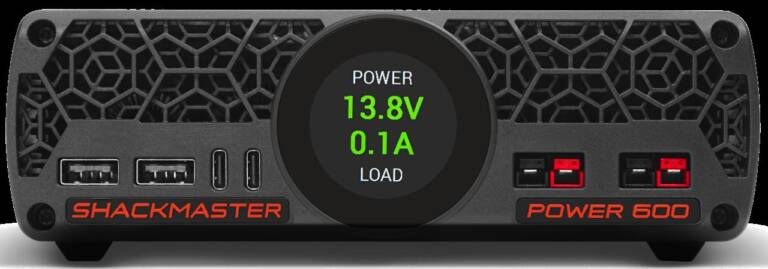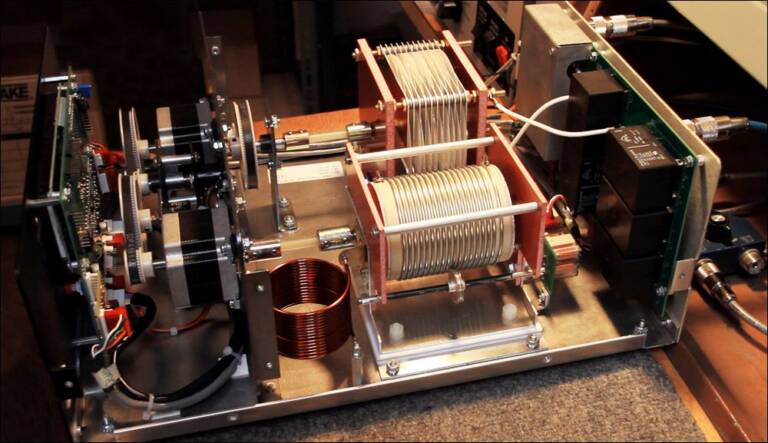Ham Radio RF Amplifier Explained

Ham radio linear amplifiers are used where it is necessary to increase the output power from a transmitter or typically a transceiver (a radio with both transmit and receive operation). Often these linear amplifiers are needed when stations want to increase the power being transmitted to the full legal limit for the purpose of gaining signal distance, although there are others reasons as well. Very few transceivers provide more than 100 watts for HF radios, 50 watts for typical mobile VHF/UHF radios, and 5 watts for typical hand-held VHF/UHF radios. For that reason, many ham radio enthusiast prefer using an external linear amplifier to enhance their operational capabilities.
Linear amplifiers tend to be associated more with HF operation than with frequencies above 30 MHz, however amplifiers are also available for VHF and UHF as well.
Why linear amplification?
Linear RF amplifiers are required where signals that have an amplitude component are used. These amplitude components carry information and for this to be accurately preserved, the signal must be amplified in a linear fashion.
Signals including amplitude modulation, single sideband, and quadrature amplitude modulation are typical, and for ham radio, linear amplifiers are required for single sideband. If the RF amplifier is not linear, then the signal will be distorted and this will result in intermodulation products spreading out either side of the signal to create what is termed splatter.
To ensure that no excessive levels of signal splatter are generated, thus preventing interference to others, it is suggested that amplifiers remain linear.
Signals that do not carry amplitude variations such as FM signals can use non-linear amplifiers like class C amplifiers which are more efficient and do not need the same level of heat sink (heat dissipation) capability. Non-linear amplifiers are cheaper to manufacture.
Reasons for installing a ham radio linear amplifier
The main reason for installing a ham radio linear amplifier is to increase the signal output, thereby becoming a larger signal on the band and potentially making distant radio contacts when otherwise that would not be possible.
For example, a ham radio operator station wanting to make contact with another ham radio operator station several hundred or even several thousand miles away, the increase in power output will be reflected as a stronger signal at the operator receiving station resulting in more contacts being made. An additional benefit of using an amplifier is being heard on frequencies experiencing what’s known as a “pile-up”.
A typical HF transceiver has an output up to 100 watts. If a linear amplifier is used to increase this to 400 watts, this would be a signal strength increase of 6dB. Interestingly, 6dB is equivalent to one “S” point on the receiver station’s radio meter, which represents a marked increase in received audio clarity and strength. Often, one additional S point can make the difference between a successful or failed contact.
Taking the power from 100 watts to 1500 watts represents a gain of nearly 12dB and this is an increase in signal strength of approximately two “S” points. Any station increasing its strength by two “S” points would see a significant improvement in the capability of the station, and hence the stations being contacted.
Tube & semiconductor linear amplifiers
Tube based and semiconductor based amateur radio linear amplifiers are available. Typically, thermionic or tube technology is still used for many amplifiers, although semiconductor based amplifiers are also widely used and provide interesting benefits over their thermionic counterparts.
-
Tube / valve amateur radio linear amplifiers: Tube / valve RF linear amplifiers have been in use for many decades and have provided excellent service in ham radio RF linear amplifiers. They are robust and will tolerate mismatches well, although operating under poor conditions for extended periods will shorten their life.
They also require very high voltages to be used within the amplifier – often 2 – 3 kV. These voltages can be lethal, so great care is needed when working on them. Also be aware that capacitors in the amplifiers can retain their charge for a long time. Great caution is needed, and they are best worked on after they have been switched off for a while and even then care needs to be exercised, checking all points for high voltages.
These amplifiers also need time from switch on for the tubes / valves to warm up before they can be used. Despite these characteristics, these RF amplifiers provide excellent and reliable service, often lasting for many years. Some have been service for ten or twenty years and still perform well.
-
Semiconductor amateur radio linear amplifiers: Semiconductor linear RF amplifiers have a number of advantages. They do not use the high voltages that the vacuum tube RF amplifiers need, and they are also ready to operate almost instantly – they do not need the warm-up period that the tube / valve linear amplifiers require. However, they do require an accurate match. Semiconductors will not withstand the high peak voltages and currents that may appear if a poor VSWR is present and therefore they have protection circuits to reduce the power output under these conditions.
The choice of amplifier technology will depend upon the preferences of the operator and whether a semiconductor or tube based linear is going to suit best.
Points to consider before buying a linear amplifier
Although it sounds as if increasing the power level is a great idea, there are a few points to consider before moving ahead.
- Consider the cost: Linear amplifiers are costly items of amateur radio equipment. They can cost as much as a nice Ham Radio, and often more than.
- Improve the antenna and feeder before buying a linear: There is no point in buying and installing a linear amplifier if an improper or poorly designed coax/feeder line and antenna are used. IT is far more effective to improve the antenna and its feeder. Only then, should buying a linear being considered.
- Upgrading shack equipment for a new amplifier: A linear amplifier will significantly increase the power level used, potentially requiring upgrades to equipment such as VSWR meters, coax/feeders and even the antenna itself. There will be additional costs.
- Keep antennas away from occupied areas: The use of a linear amplifier will increase the level of radiation from the antenna. Although there are still discussions about the links between radiation and health, it is always wise, and expected, that you keep high power levels away from where people are likely to be – raising antennas and ensuring they are away from occupied areas is an essential precaution. The ARRL website has a RF Exposure calculator; use it.
- Potential for local RF interference: Increasing the power levels being transmitted using a linear RF amplifier can give rise to interference on local domestic appliances. Care should be taken to ensure that antennas are well away from domestic receivers, and other electronic apparatus that may be affected. This is another reason to ensure that the antennas are well removed from inhabited areas.
Happy Hunting!


